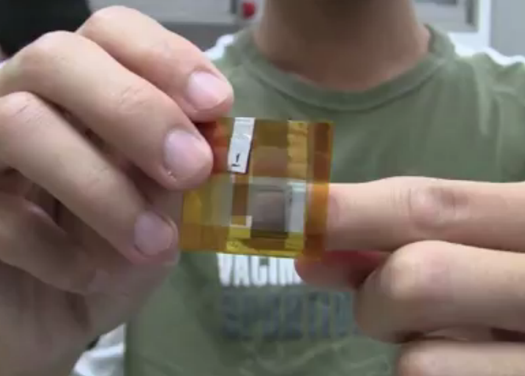A Transparent Battery to Power Next-Gen See-Through Gadgets
Stanford researcher Yi Cui looked across the field of transparent electronics and saw that all was not equal. While all...

Stanford researcher Yi Cui looked across the field of transparent electronics and saw that all was not equal. While all other major electronics components–things like transistors, displays, and other circuitry–have been made transparent, no one had taken the time and effort to create a transparent power source. And you can’t have a fully transparent device without a transparent battery. So Cui made one.
There are a few ways to make an electronic component transparent. One is to make it so thin that it doesn’t register with the human eye. Or you can make the component take the form of a pattern whose features are so small they are invisible. Some battery components are easy to render transparent by shrinking them, but electrodes are particularly difficult to make thin. A super-thin electrode isn’t energy dense, and therefore it doesn’t store up enough power to be useful in any realistic way.
So Cui opted for the second approach. He and his team figured that if you can pattern the electrode into a superfine mesh, you can still build an energy dense battery. With enough electrode material distributed across the mesh, a battery can still hold a significant charge.
So using a relatively straightforward lithography method, they built a framework for the mesh in a soft, clear, spongy material called PDMS. To make a complete battery, they simply need two of these layers filled with electrode material–in this case, they used the makings of a standard lithium-ion battery–with a gel electrolyte (also clear, of course) sandwiched in between. Encase the whole thing in plastic, and you’ve got a see-through battery.
In the lab, the batteries have been used to power a small LED light (which can be viewed straight through the battery itself). Cui thinks the batteries should be roughly half as energy dense as a equally-sized regular battery. So right now the prototype is about as powerful as a NiCad battery, but Cui says he and his team should be able to improve that by an order of magnitude by reducing inefficiencies in the prototype design and layering batteries one atop the other. Depending on how it scales, the Stanford team thinks such transparent batteries could be commercialized in just two to four years.
See a video of the technology in practice via the Tech Review link below.